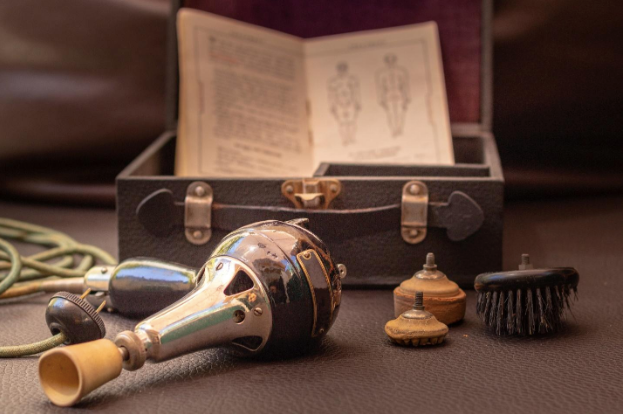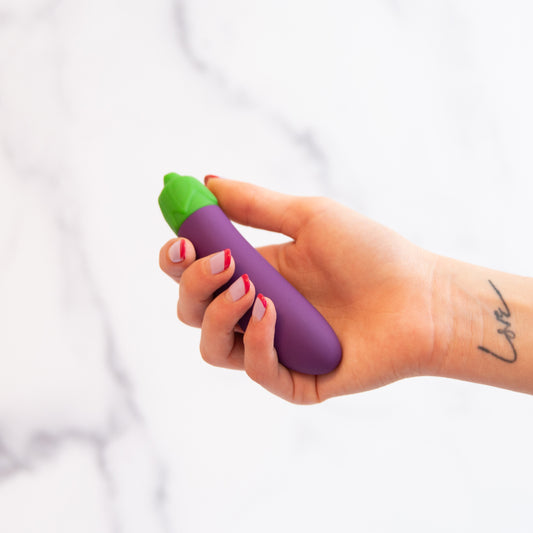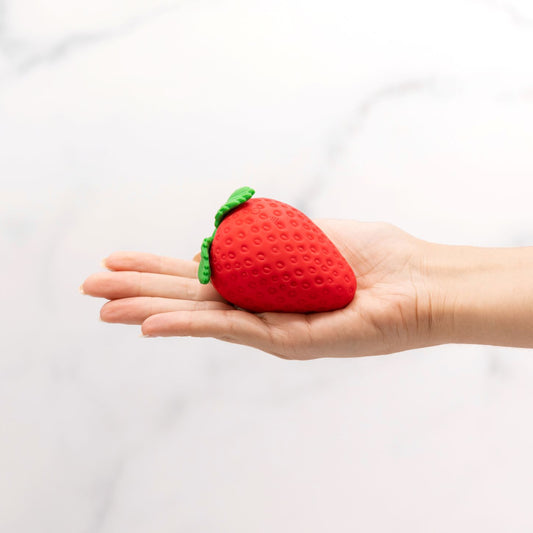Vibrator History 101
By Daisy Ducati - The Fastest Girl in the Business
We’ve heard the tales of Victorian women lifting their bustles for doctors to perform a certain stimulating massage as a cure for hysteria. There’s also been a rumor circulating that Cleopatra enjoyed filling a dried gourd with bees to get her buzz, but believe it or not, these are not the reasons we have our favorite sexy-time tools today. So where did all this mechanical magic come from?
Origin Story
The very first electromechanical vibrator was invented in 1883 by English doctor, Joseph Mortimer Granville. While I’d love to be able to tell you it was intended as a sex toy, the reality of its purpose is a bit less stimulating. In Granville’s book, he discussed the purpose of his vibrator as a treatment for pain, indigestion, constipation and “pseudo-diabetes”. He also suggested using it to treat impotence in men but said that he did not use it at all on women.
Up until recently, some historians believed that Granville invented the vibrator to treat Hysteria, a 1800s diagnosis that is now considered normal sexual behavior in women. The theory claimed that doctors treated Hysteria by masturbating women to orgasm using a ‘massage’, and that their workload was so large, they needed the help of vibrators to give their aching hands a rest. There was even a 2011 comedy movie based on this story.
Even though it’s a fun theory, Hallie Lieberman & Eric Schatzberg of the Georgia Institute of Technology did a careful analysis of sources and found no evidence to support the historical use of vibrators as any sort of medically condoned treatment for hysteria. They referred to the book that had spread the idea (Technology of the Orgasm) as, “a failure in academic quality control”.

Early 1900s
Although Mortimer’s medicinal vibrator was only really used by doctors, a few companies in the early 1900s began releasing similar models for at-home use. It’s hard to say whether or not these devices were being used for sexual pleasure because the 1873 Comstock Act outlawed any ads that were considered “obscene” and masturbation was an extremely taboo subject at the time.
While I’m sure it didn’t take long for a resourceful woman to put her new appliance to good use, the early models were marketed as a cure-all for a whole range of ailments, just like Granville intended.
By the 1920s every catalog and magazine was full of ads for mail-order massagers for weight loss, beauty aids, and magical cures. Some of the claims made by manufacturers were so outrageous that the American Medical Association called the vibrator industry a delusion.
1950s

By the 1950s, doctors no longer stood behind the supposed health benefits of electric massagers, and they became entirely sold and produced for at-home use.
Manufacturers continued to make outrageous claims about the health and beauty benefits of their devices, but there was no medical science to back up these claims. By this time, vibrator ads had begun hinting at the possibility of a more intimate use for the devices. While they still couldn’t explicitly state that the devices had a sexual purpose, they certainly could market them to women as a way to make them glow and radiate joy *wink*wink*.
In 1953 Alfred Kinsey released his famous report, Sexual Behavior in the Human Female and got the world talking about female masturbation and the female orgasm. However, he did not once mention the vibrator. It seems that the use of vibrators for vaginal stimulation was still extremely taboo at this point in time.
Things changed in 1958 when the FDA began to crack down on the quackery of vibrator marketing for health benefits and weight loss. They seized vibrators that were “falsely labeled” and forced manufacturers to change their sales strategy.
1960-1970s

The 1960s became known for the free love movement and was a much more sexually liberal time. Birth control was fully legal by 1965 and the women’s liberation movement was in full swing. During this time, vibrators became an even more acceptable item in the home, but they were still marketed as massagers or novelty items.
It wasn’t until the 1970s that massagers finally got to be called sex toys. 1974 was a big year in vibrator history because that’s the year the Hitachi Magic Wand was born. Even though the company adamantly denied sexual use for their product until 2013, no one was fooled. The same year that Hitachi released its infamous massager, Betty Dodson, Ph.D. released her book, Liberating Masturbation: A Meditation on Selflove and began teaching masturbation classes in New York. Can you guess what her favorite toy was? This was only the beginning of the popularity of wand style vibrators.
While this time period was marked by a sense of sexual liberation, it was also a period of repression and censorship. In 1973 Texas was one of the first states to pass an obscenity law that would ban the sale of “any device designed or marketed primarily for the stimulation of human genital organs.” A handful of states would follow and while some of the bans have been repealed, it is still illegal to sell vibrators in Alabama, Georgia, Louisiana, Virginia, and Texas.
1980-1990s

By the time the 80s came around, vibrators were officially sex toys and companies were sprouting up left and right to sell electric pleasure to women all over. In 1983 a company from Japan called Vibratex released a line of vibrators with a hybrid of internal and external components. In order to circumvent Japan’s obscenity laws at the time, the products were made with bright colors and various animal shapes. These toys came with beaver, turtle and kangaroo shapes, but the most popular to this day has been the Rabbit Pearl model.
This was the first line of vibrators designed to stimulate the g-spot and clitoris at the same time and women loved it! In 1998, an episode of Sex and the City shows Charlotte becoming obsessed with her rabbit style vibrator and introduced the toy to a wider, more mainstream audience.
Present Day

In 2009, the very first two studies of vibrator use among Americans were published by researchers at Indiana University. One study surveyed men, and the other surveyed women. The study showed that “vibrator use during sexual interactions is common, with use being reported by approximately 53 percent of women and 45 percent of men ages 18 to 60.” Vibrators are also fun on prostates, perineum and even nipples and there is something out there for everyone.
Now in 2019, it’s possible to cutting-edge vibrators of all shapes, sizes, and colors. Companies like Emojibator are creating innovative new designs that are waterproof, rechargeable, and full of sexy features:
-
The Chickie is a darn cute vibrator that both vibrates and creates suction for clitoral stimulation.
-
The Shark brings a refreshing twist to the traditional look of rabbit vibes and is one of the only dual action vibrators that can expand to change its shape and size.
-
The Eggplant is a top-rated bullet vibrator based on the most suggestive emoji of all time, made of medical-grade silicone and equipped with 10 vibration settings that always hit the spot.
All in all, vibrators are becoming less taboo and more an integral part of healthy self-pleasure. With new pleasure technology being developed every day, the future of vibrators is definitely looking bright.





